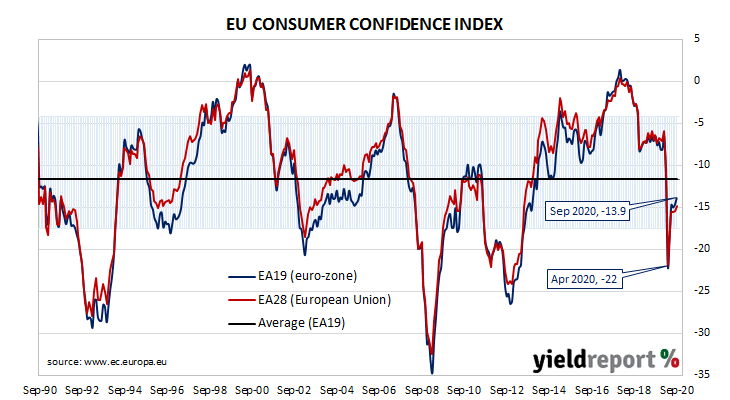Summary: Euro-zone households slightly less pessimistic again in September; above consensus expectation but at level described as “lacklustre”; still below long-term average; euro-zone bond yields up slightly.
EU consumer confidence plunged during the GFC and again in 2011/12 during the European debt crisis. It fell back significantly in late 2018 but only to a level which corresponds to significant optimism among households. After a plunge took place in April 2020, a recovery of sorts took place through May and June. More recent readings have moved higher but at a slow pace.
The September survey conducted by the European Commission indicated its Consumer Confidence index has increased to -13.9. The reading was above the -15.0 which had been expected and higher than August’s final figure of -14.7. The average reading since the beginning of 1985 has been -11.6.
Westpac senior economist Elliot Clarke said “consumer confidence remained lacklustre.”

The report had a modest effect on major European bond markets. By the end of the day, the German 10-year bund yield had gained 2bps to -0.51% while the French 10-year OAT yield inched up 1bp to -0.24%.

